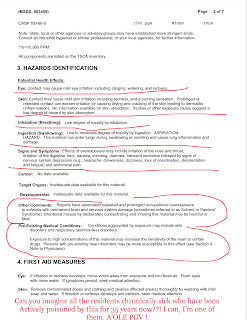Your lerz civilian defense broadcast Mauna Loa , the worlds LARGEST MOST ACTIVE VOLCANO ⚠️⚠️⚠️🌋🌋🌋☢️☢️☢️🆘🆘🆘🚨🚨🚨👁🌈🌿🧨❤️🔥🌋🌋⚠️⚠️⚠️update past week data 10-04-21 🙄🤙🏻🆘⚠️🧨🌋🌋🌋👁♾♾⚠️🆘🆘☢️☢️🌋🌋🌋🌿🌿🌿🌊🌈🌈🌈
Good thing we made this blog guys.
when, OR IF SHIT HITS THE FAN ,
YALL WOULD HAVE BEEN COMPLETELY DUMBFOUNDED
Alert Level: ADVISORY, Color Code: YELLOW2021-09-30 19:55:20
HAWAIIAN VOLCANO OBSERVATORY WEEKLY UPDATE
U.S. Geological Survey
Thursday, September 30, 2021, 9:55 AM HST (Thursday, September 30, 2021, 19:55 UTC)
MAUNA LOA VOLCANO (VNUM #332020)
19°28'30" N 155°36'29" W, Summit Elevation 13681 ft (4170 m)
Current Volcano Alert Level: ADVISORY
Current Aviation Color Code: YELLOW
Activity Summary: Mauna Loa Volcano is not erupting. Rates of seismicity at the summit remain slightly above long-term background levels, but have not changed significantly over the past week. Other monitoring data streams—ground deformation, gas discharge, and visual observations—show no significant changes.
Observations:
During the past week, HVO seismometers recorded 69 small-magnitude earthquakes—all below M3.0—beneath the summit and upper-elevation flanks of Mauna Loa. The majority of these earthquakes occurred at shallow depths less than 8 kilometers (5 miles) below sea level.
Measurements of ground deformation, using Global Positioning System (GPS) instruments, confirm that the surface of the volcano has not moved appreciably over the past week.
Gas concentrations and fumarole temperatures at both the summit caldera and at Sulphur Cone on the Southwest Rift Zone remain stable.
Webcam views have shown no changes to the landscape at the Mauna Loa summit or on the lower flanks of the volcano over the past week.
For more information on current monitoring of Mauna Loa Volcano, see: https://www.usgs.gov/volcanoes/mauna-loa/monitoring
Background:
Mauna Loa is the largest active volcano on our planet, rising gradually to 4,170 meters (13,681 feet) above sea level. Its long submarine flanks descend an additional 5 kilometers (3 miles) below sea level to the ocean floor. The ocean floor directly beneath Mauna Loa is, in turn, depressed by the volcano's great mass another 8 kilometres (5 miles). This places Mauna Loa's summit about 17,000 meters (56,000 feet) above its base. The enormous volcano covers half of the Island of Hawaiʻi and by itself amounts to about 85 percent of all the other Hawaiian Islands combined.
Eruptions typically start at the summit and, within minutes to months of eruption onset, about half of the eruptions migrate into either the Northeast or Southwest Rift Zone. Since its first well-documented eruption in 1843, the volcano has erupted 33 times with intervals between eruptions ranging from months to decades. Mauna Loa last erupted in 1984.
Mauna Loa eruptions tend to produce voluminous, fast-moving lava flows that can impact communities on the east and west sides of the Island of Hawaiʻi. Since the mid-19th century, the city of Hilo in east Hawaiʻi has been threatened by seven Mauna Loa lava flows. Mauna Loa lava flows have reached the south and west coasts of the island eight times: in 1859, 1868, 1887, 1926, 1919, and three times in 1950.
More Information:
Mauna Loa activity summary also available by phone: (808) 967-8866
Mauna Loa webcam images: https://www.usgs.gov/volcanoes/mauna-loa/webcams
Mauna Loa photos/video: https://www.usgs.gov/volcanoes/mauna-loa/photo-video-chronology
Mauna Loa maps: https://www.usgs.gov/volcanoes/mauna-loa/maps
Mauna Loa FAQs: https://www.usgs.gov/volcanoes/mauna-loa/faqs
GOOGLE HOW HALEMAUMAU AND MAUNA LOA ERUPTED IN 1800 GUYS.
AND GET YOUR MONITORS
LITERALLY.
PELES HOME
JAZZY OUT
DAZED OUT ON DAY 5





Comments
Post a Comment